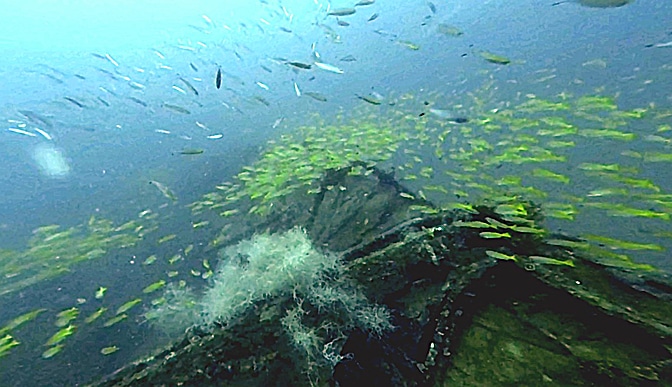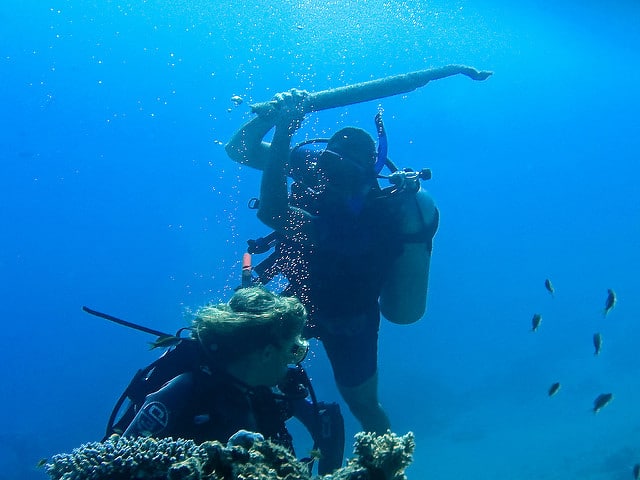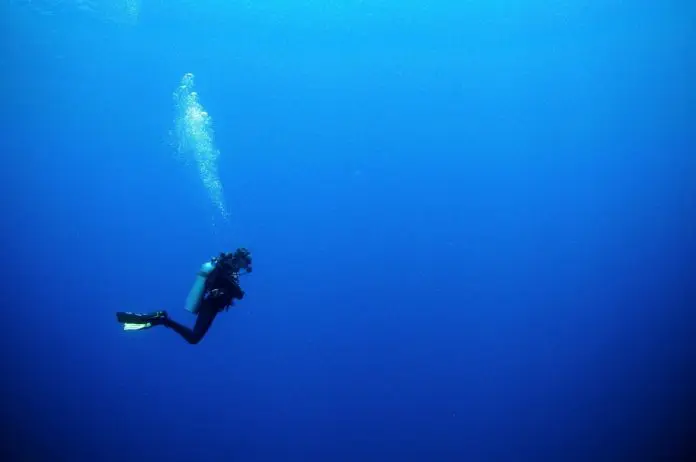“Divers do it deeper” is a saying often seen on a diver’s bumper stickers or t-shirts. As a deep diver, we know of course it means that we go underwater deeper than most swimmers. If something else came to mind, well just keep it to yourself. When we start our underwater journey training as an Open Water Diver (OWD) we learn that we are limited to the depths that we can dive. As an OWD, we learn that the limit for recreational scuba diving is 40 meters or 130 feet and half that depth is allowed as an Open Water Diver. We get a quick overview why, but often it has little meaning to us. Face it, we are likely in information overload anyway.

Deep Diver Limits
The depths that the open water, advance and deep divers can go may seem arbitrary but in reality they do represent a change in risk. Risk that if not understood could easily become fatal. The Department of Diving and Hyperbaric Medicine at Royal Hobart Hospital Tasmania released an interesting report a few years ago concerning the rate of DCS they treated. Recreational divers made up 28% and recreational Hookah divers represented 30% of the cases. The remainder were commercial divers. Hookah is a surface supplied air diving device, however, the same decompression risk exist. When they factor in the smaller numbers of estimated hookah divers who were able to dive to 20 meters, they estimated that the risk factor was between 10 to 20 times higher for hookah divers. Also, Hookah divers having up to 4 hours of air on a dive were able to exceed NDL in 10 meters of water and experience DCS. Less than 30% of the hookah divers treated understood they were at risk. This is a prime example of the benefits of training.
Decompression Sickness
The risk of decompression sickness (DCS) and nitrogen narcosis increases as you go deeper. Open water divers are allowed to go to 60 feet about 18 meters. At this depth, if the rate of ascent is within the limits prescribed, the risk of DCI is very low, and nitrogen narcosis is not measurable. Divers will run out of air before they reach the NDL times.
When we take our open water course, we learn or were refreshed our memories of Boyle’s law. Boyle’s Law leads you to the point that the compression of air will double as you go from one atmosphere of pressure to two. It will require twice as much air at 10 meters (2 ATM) as it does at the surface to fill you lungs. At 20 meters we need three times the amount as the surface. Once you descend below the 20 meter mark, you will approach the point where the amount of remaining air is no longer the determining factor on the length of a dive. The determining factor will become the NDL. Where this point is will vary for each diver and each dive will have additional variance.
While the use of dive computers will help determine a more precious NDL, divers will need a good understanding of the theory behind the dive tables that are the result of depth vs time studies. The Advanced Open Water Diver deep diving module provides the basic knowledge and a training dive to allow divers to understand the risk and to mitigate this risk while diving to 100 feet or 30 meters.
The Deep Diver Specialty program takes the advance diver beyond the 100 foot /30 meter limit to the limit of recreational diving limit of 130 feet/40 meters. The course has a theory portion and four open water dives. The course material covers greater details of the risk of the deep diver and the dives have demonstrations of different aspect of pressure.

Nitrogen Narcosis
One of the items that is included in the program is nitrogen narcosis. Nitrogen narcosis has a number of nick names such as “Rapture of the Deep” and “Martini’s Law” and you will sometimes hear a diver say they got “narced”. The nitrogen in your body starts having a narcotic effect on you when under pressure. The effect is similar to alcohol, hence the name “Martini’s Law”. Similar to becoming drunk, the diver may not be aware that they are being effected. Judgment may become clouded and physical reactions slowed. While some divers will show impact of nitrogen narcosis at depths shallower than 100 feet/ 30 meters, they are frequently mild. However, beyond that point most divers will have some effects.
Some people’s reaction may be so intense that they will do things that no rational person would. Under the influence of Nitrogen divers have been known to remove equipment, failed to monitor air supply, descend instead of ascend and even done things that lead to their deaths. Sadly, they sometimes do things that leads to the death of a dive buddy as well. During the deep diver training, divers will solve a simple problem at the surface such as a math problem or a matching problem while being timed. At depth the diver will complete a similar problem while being timed. The difference in the time it took to complete the problems will often shock the diver.
Recent studies have shown that the effect of Nitrogen Narcosis may have some lingering influence. However, the symptoms will start going away with an ascent. Even a few feet could allow the diver to regain clear thinking. Like alcohol intoxication, no two people will react the same. Also, the amount of nitrogen in the system and depth obtained before nitrogen narcosis occurs can vary dive to dive. The training does not give you a firm at a certain depth this will happen to me. What it does give you is a demonstration that it can and will happen to you under the right conditions.
Why Dive Deep
While many of the dive certifications are optional, you can fairly certainly say that the Advance Open Water Diver and the Deep Diver certifications are needed. Most dive operators will not allow a diver dive beyond 60 feet and 100 feet without the proper certification. Whether the additional training for a deep diver is needed will depend on you and where you will dive. Fewer than 10% of my dives have been beyond the 30 meter mark, but each one of them has been very memorable.

